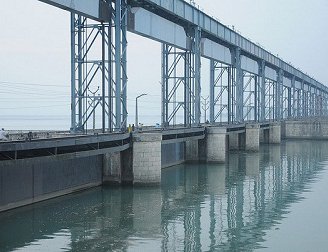
At present our public is completely misled about the Kosi Treaty. Similarly our people are mislead about the vast opportunity for the development of our country within relatively a short period if we succeeded in taking right decisions on implementation of the projects in Kosi basin.
The Gandak River Treaty signed between Nepal and India in 1959 had totally curtailed our country’s right to use freely the water of rivers in Gandak basin within our territory except in three months of the monsoon season when all Gandak tributaries are in full spate. There was a widespread condemnation of that Treaty within Nepal. Few years later our country started serious negotiations with India to revise the Gandak and Kosi treaties.
The 1966 Revision of Kosi Treaty
Unfortunately very few know about the revision of Gandak and Kosi treaties. The Gandak Treaty was revised in 1964. After this revision the restriction imposed on use of Gandak water in Nepalese territory has been considerably relaxed. Next, our then government succeeded in securing the revision of the Kosi Treaty. The 1966 revised Kosi Treaty is a landmark treaty entitling Nepal absolute right to use the entire water of the Kosi in whatever way Nepal pleases. Thus, India has without any reservation recognized Nepal’s absolute right to use the entire water of the Kosi and its tributaries. Surprisingly, there is still a hangover of the bad feeling among most of Nepalese from the 1959 Gandak Treaty biased against Nepal’s legitimate right. Still, people suspect foul-play in Kosi Treaty.
Indian Recognition of Nepal’s Absolute Right
The Clause 4 of the revised Kosi Treaty guarantees Nepal’s absolute right to use the entire water of the Kosi:
Clause4 - HMG shall have every right to withdraw for irrigation and for any other purpose in Nepal water from the Kosi river and from the Sun-Kosi river or within the Kosi basin from any other tributaries of the Kosi river as may be required from time to time. The Union (India) shall have the right to regulate all the balance of supplies in the Kosi river at the barrage site thus available from time to time and to generate power in the Eastern Canal.
Thus the revised treaty allows Nepal to draw for irrigation or any other purposes the entire flow of the Kosi even to the extent of drying up the river and virtually to cut off totally the water supply to the existing Kosi barrage and also to any other barrages to be built in India in future. It should be remembered that Nepal would have to use for irrigation in Eastern Terai the entire dry season flow of the Kosi, which is about 300 cumecs, if multipurpose storage dams are not built to augment the dry season discharge.
Doctrine of Absolute Right
India had been pursuing the doctrine of absolute right to water of the upstream country since the independence from the British Empire. India’s claim on Jangipur barrage and the West Bari Canal drawing water from the Sutlez river for irrigation in Pakistan on the grounds that India is upper riparian country had triggered the Indus river dispute. The dispute had been referred to UN Security Council. Similarly, India had denounced the Barcelona Convention in order to construct the Farakka barrage for diverting the Ganges, which is a navigable river, from flowing into then East Pakistan. India’s had then been following water right policy favourable to both our countries, which must have had bearing on the 1966 amendment of the Kosi Treaty.
Change from 99 Years to 199 Years
The validity of the revised Kosi Treaty has been amended to 199 years from the previous 99 years. It is quite obvious that this amendment serves solely Nepal’s interest. The amended Kosi Treaty would allow our country enough time even if our country would have to follow time-consuming path to implement on our own various projects in the Kosi basin to utilize the entire dry season flow of the Kosi for irrigation exclusively in Nepal in the event the governments of Nepal and India failed to reach an agreement on development of very large multipurpose projects benefiting both Nepal and India. Strangely some of our water experts still consider that it was a mistake to amend the treaty to 199 years. They even blame King Mahendra for the amendment of the validity of the treaty to 199 years. They allege that the validity of the treaty was amended under Indian pressure.

Dr. A.B. Thapa
Thapa writes on water resources issue
- Dudhkosi Multipurpose Project
- Jul 11, 2022
- Dudh-Kosi Power Project And Kosi Treaty
- Sep 27, 2021
- Uttarakhand Glaciers And Recent Disaster: A Lesson To Our Country
- Mar 02, 2021
- Multipurpose Langtang After Melamchi: Inter-Basin Water Transfer
- Nov 04, 2020
- Large Storage Dams Projects Wary of Giving Away Children’s Inheritance
- Dec 22, 2019
















